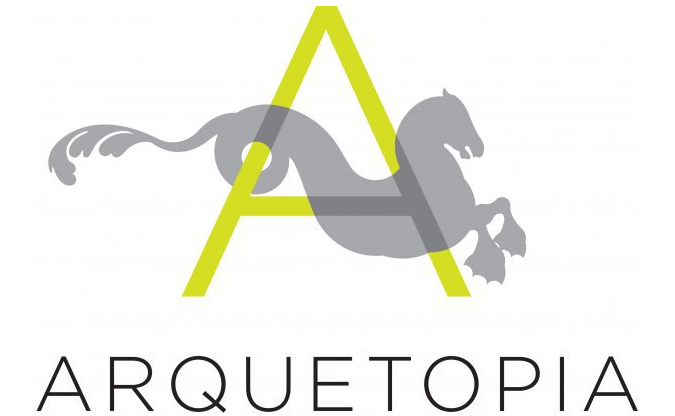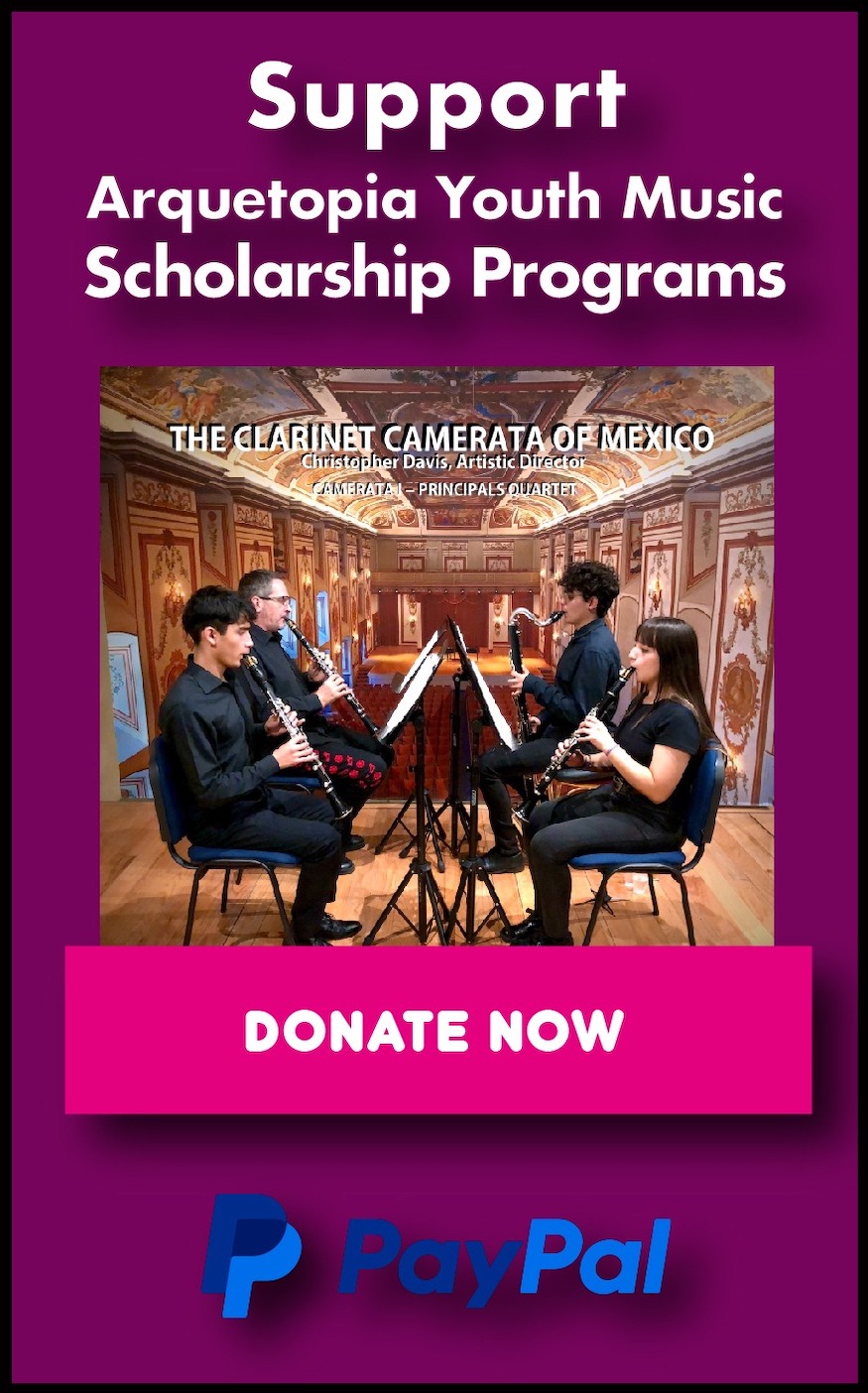The Malleable Landscape:
Mexican Ceramics Program
Arquetopia Location: Puebla, Mexico

Note: This program is focused on Mexican Ceramics and techniques. For a program with focus on pre-Columbian ceramics, we offer the Pre-Columbian Ceramics Program in Cusco, Peru.
This comprehensive, customized, mentored, and supervised residency program offers offers competitive professional opportunities for emerging and mid-career, national and international artists and designers age 20 and over. In addition to the individual mentoring provided by our directorial and curatorial staff for personalized research assistance/resources, project guidance, and critique, participants of this program work independently in our spaces and/or our partnered spaces.
With a culture spanning over 30 centuries, ceramics in Mexico have consistently served as both a practical and symbolic medium. Far beyond mere utilitarian objects, they have been powerful indicators of status, identity, and social hierarchy. From the intricate vessels of pre-Columbian civilizations to the vibrant, contemporary works, Mexican ceramics reflect the deep cultural values and complex societal structures that have evolved through history. These objects carry rich narratives—expressing the artistry, beliefs, and technologies of their makers—while also functioning as status symbols, signaling wealth, power, and spiritual significance. The enduring role of ceramics in Mexican society highlights their importance as a dynamic form of cultural expression.
The advanced civilizations and cultures of Mesoamerica developed highly sophisticated ceramic art, characterized by great diversity in shapes, techniques, scales, and a wide range of uses—from storage and household items to the production of goods, cultural rituals, commemorations, and even social currency. The European invasion of the Americas in the 16th century introduced new traditions, techniques, symbolisms, and uses, including Islamic and Sephardic influences, glazes, and forms. As the Spanish Empire expanded and the need to rebuild cities devastated by the conquest grew, along with the development of new urban centers, a new wave of architecture emerged. The demand for decorative tiles in these buildings, coupled with the availability of high-quality clay in the region, led to the flourishing of the ceramic industry.
In a complex process of amalgamation, ceramicist from Mesoamerica learned, mastered, and appropriated many of these techniques and cultural expressions, blending them with their own traditional knowledge. Puebla quickly became the ceramic capital of the Americas, producing pottery and tiles for regions across the continent. Talavera ceramics became a symbol of class differentiation. In the 17th century, the Manila galleons introduced new influences, such as the preferred use of blue and Chinese iconography, influenced by Ming dynasty ceramics imported to the region. In the 18th century, Italian influences brought the use of other colors. Talavera, Mexico's most famous ceramic style, stands as a testament to the multiplicity of peoples and cultures, becoming an important symbol of identity in the Americas.
1. The Connectivity of Concepts
The Mexican Ceramics Program invites participants to engage with a dynamic, multifaceted approach, where the historical, cultural, and artistic contexts of ceramic traditions are explored in depth. Through a combination of self-reflection and personalized mentorship, participants examine how their creative practices intersect with broader social, political, and historical forces. The program emphasizes the integration of hands-on ceramic production with conceptual exploration, encouraging participants to reflect critically on their work through ongoing dialogue and feedback with mentors. This approach fosters an understanding of how their practice relates to global cultural conversations, while challenging dominant narratives and opening space for new, transformative perspectives in ceramic art. Through this process, participants are empowered to reshape their art in ways that respond to and challenge traditional notions, contributing to a broader, evolving discourse in contemporary ceramics.
2. The Practice of Unlearning
The Mexican Ceramics Program invites participants to critically explore the legacies of colonialism embedded in traditional ceramic practices, materials, and techniques. Through personalized mentoring, participants delve into how colonial histories have influenced contemporary ideas of craftsmanship, technique, and authorship. This process of unlearning challenges participants to reconsider established paradigms, confronting dominant cultural narratives and reshaping their creative processes. By engaging with historical and indigenous knowledge, participants reclaim traditional methods and approach their work with a renewed, conscious awareness that revitalizes these practices through contemporary perspectives. This dynamic reflection fosters a deeper connection to both personal and collective histories, creating a foundation for decolonized artistic expression that evolves beyond colonial structures.
3. The Rhythm of Creating
In the Mexican Ceramics Program, rhythm serves as a space for participants to explore the intersection of technique, materials, and cultural and historical contexts that influence their work. Through hands-on experimentation with various ceramic methods, participants engage in a fluid, intuitive process where materiality, personal exploration, and creative discovery converge. This approach encourages an ongoing dialogue between making, reflecting, and discovering, transforming the artistic process into an active site of inquiry. Intuition, rather than rigid intention, guides participants to rethink historical narratives, deepen their understanding of materials, and create new connections between past traditions and contemporary ceramic practices. This dynamic environment allows participants to navigate the complex rhythms of creation, merging personal insight with collective memory to shape their evolving practice.
4. The Ethics of Movement
In the Mexican Ceramics Program, participants are encouraged to embrace the methodology of "intuition" over "intention," a key concept developed by visual artist and scholar Francisco Guevara. While intention often involves a predefined goal or outcome, intuition allows for a more organic, open-ended approach that guides participants to engage with their materials and processes in a responsive and exploratory way. This shift from intention to intuition creates space for discovery, fluidity, and personal insight, empowering participants to move beyond rigid concepts and let their practice evolve naturally. By prioritizing intuition, participants challenge fixed ideas, allowing their artistic process to emerge through trial, experimentation, and reflection. This approach fosters deeper connections to both the materials they work with and the histories they engage, enabling new interpretations and innovative expressions to take shape organically.
Artist-in-Residence Leah Fraser (Australia)
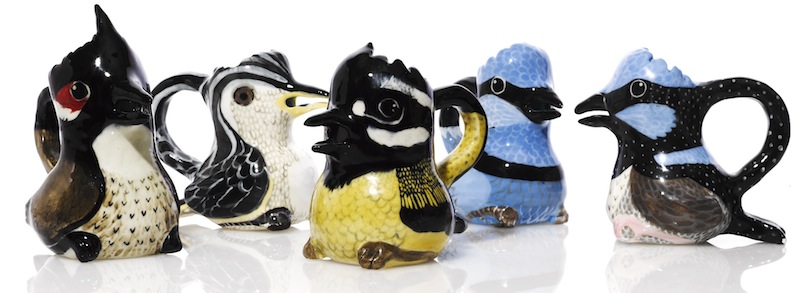
The Mexican Ceramics Program is a 5-week mentored, assisted and supervised production program. In addition to the individual mentoring provided by our directorial and curatorial staff for personalized research, project guidance, and critique, this program offers the unique opportunity to produce a variety of work on-site at Arquetopia or at our partnered studio. Participants receive technique assistance and supervision from a skilled, local master ceramist from the community. The techniques and studio facilities adhere to the colonial ordinances of Puebla, with a focus on traditional Talavera methods that emphasize handmade processes; no industrial chemicals are incorporated into the clay or glazes.
Artist-in-Residence Annabel Biro (Canada)
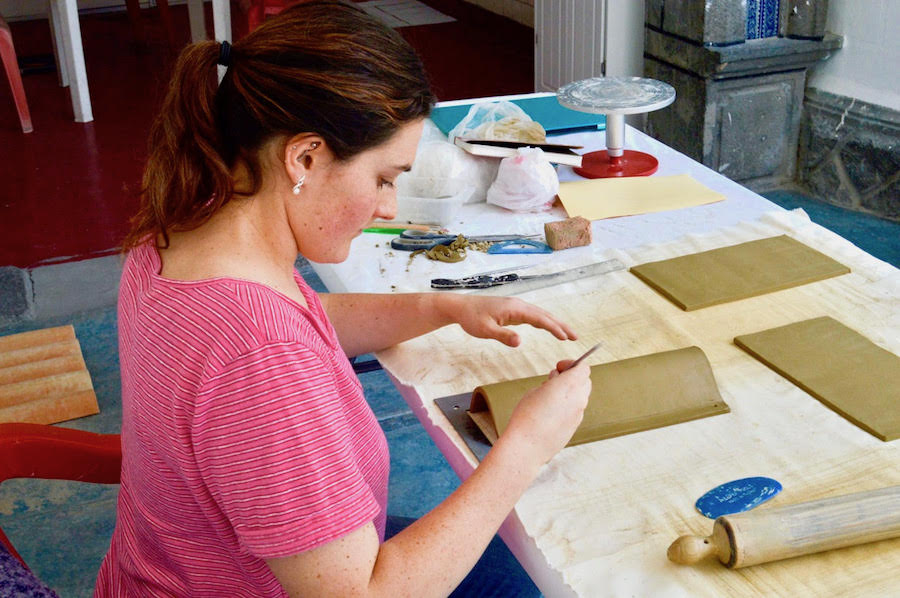
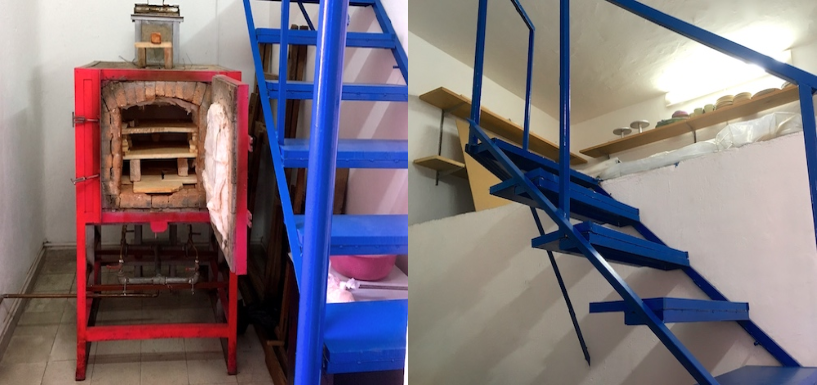 On-site ceramics firing room with medium-sized (2ft X 2ft X 2ft interior) gas kiln and upstairs drying room
On-site ceramics firing room with medium-sized (2ft X 2ft X 2ft interior) gas kiln and upstairs drying room PROGRAM DURATION / TIME PERIOD
Fixed sessions of 5 weeks. Dates are not predetermined but are proposed by the applying artist.
WHAT THIS COMPREHENSIVE MENTORED, NON-INSTRUCTIONAL PROGRAM INCLUDES
Fixed sessions of 5 weeks. Dates are not predetermined but are proposed by the applying artist.
WHAT THIS COMPREHENSIVE MENTORED, NON-INSTRUCTIONAL PROGRAM INCLUDES
Technique Assistance:
- 36 hours master guidance/assistance spaced over the 5 weeks
- A weekly meeting with our directorial and curatorial staff for personalized mentoring, research assistance, project guidance, and critique
- Staff support provided with firings and use of the studio facilities
- Furnished, private bedroom
- Wireless Internet
- 24-hour access to the kitchen for participants to prepare their own meals; meals/food are the participants' responsibility
- Use of Arquetopia’s common spaces including outdoor terraces
- Shared, serviced (single) bathrooms with modern fixtures and showers
- Housekeeping
- On-site ceramics facility with medium-sized (2ft X 2ft X 2ft interior) gas kiln and drying room
- 24-hour access to large and bright, shared art studio with generous natural light
- Personal workspace with a large table and wall space
- Some tools provided
- Ceramics materials and supplies (standard glazes and 10 kg / 22 lb of clay) provided
- Access to on-site ceramics studio and gas kiln or to special facilities (such as our partnered ceramics studios) provided, depending on project
PROGRAM TUITION INFO & APPLICATION DEADLINES
E-mail This email address is being protected from spambots. You need JavaScript enabled to view it. for tuition and application deadlines for this program.
TO APPLY
Click here to apply for this mentored, supervised, non-instructional program.

Click here to apply for this mentored, supervised, non-instructional program.

